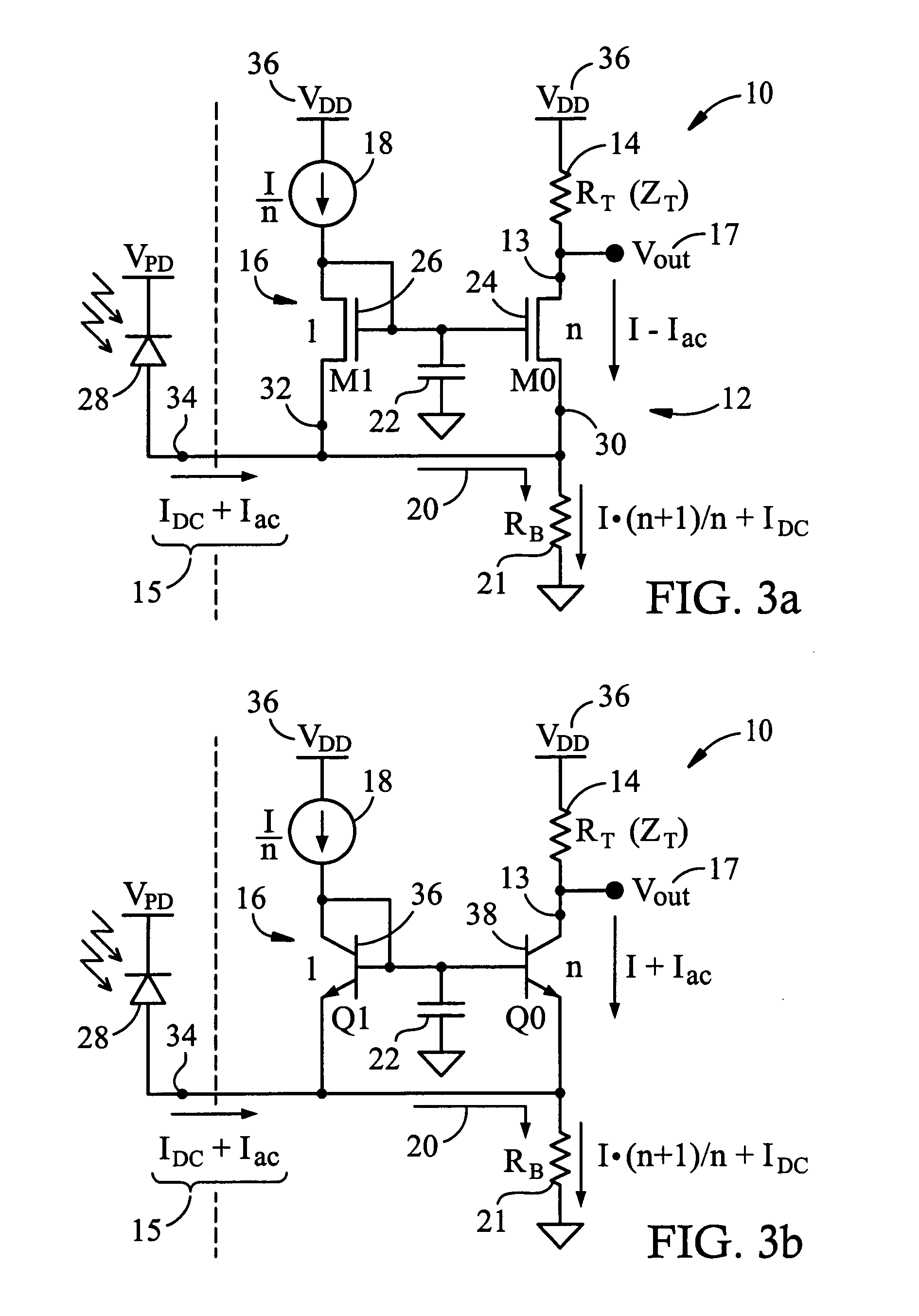Low-voltage, low-power transimpedance amplifier architecture
a transimpedance amplifier and low-power technology, applied in the field of analog circuit architecture, can solve the problems of difficult to sustain a constant collector current, large input impedance of the voltage gain stage, and difficult to achieve constant collector current, and achieve the effect of reducing the number of stacked devices, reducing power consumption, and reducing supply voltag
- Summary
- Abstract
- Description
- Claims
- Application Information
AI Technical Summary
Benefits of technology
Problems solved by technology
Method used
Image
Examples
Embodiment Construction
[0022]In a first aspect, the present invention provides transimpedance amplifier (TIA) architectures for converting an input current to a voltage. In the description below, references are made to CMOS and bipolar implementations of the TIA architectures as reflected, respectively, in FIGS. 3a and 3b. Any disparity in the amount of text devoted to one implementation or the other arises solely from the desire for clarity, and is in no manner meant to be limiting. The concepts described apply equally well to both of these families of implementation as well as to implementations that employ devices sharing the characteristics of such transistors. The term “transistor” as used herein encompasses any device that provides a controllable output current when a voltage difference is present across its terminals, the output being current-, voltage-, optically- or mechanically-controlled. Any significant differences in alternative implementations are noted. Among alternative MOSFET embodiments,...
PUM
 Login to View More
Login to View More Abstract
Description
Claims
Application Information
 Login to View More
Login to View More - R&D
- Intellectual Property
- Life Sciences
- Materials
- Tech Scout
- Unparalleled Data Quality
- Higher Quality Content
- 60% Fewer Hallucinations
Browse by: Latest US Patents, China's latest patents, Technical Efficacy Thesaurus, Application Domain, Technology Topic, Popular Technical Reports.
© 2025 PatSnap. All rights reserved.Legal|Privacy policy|Modern Slavery Act Transparency Statement|Sitemap|About US| Contact US: help@patsnap.com



